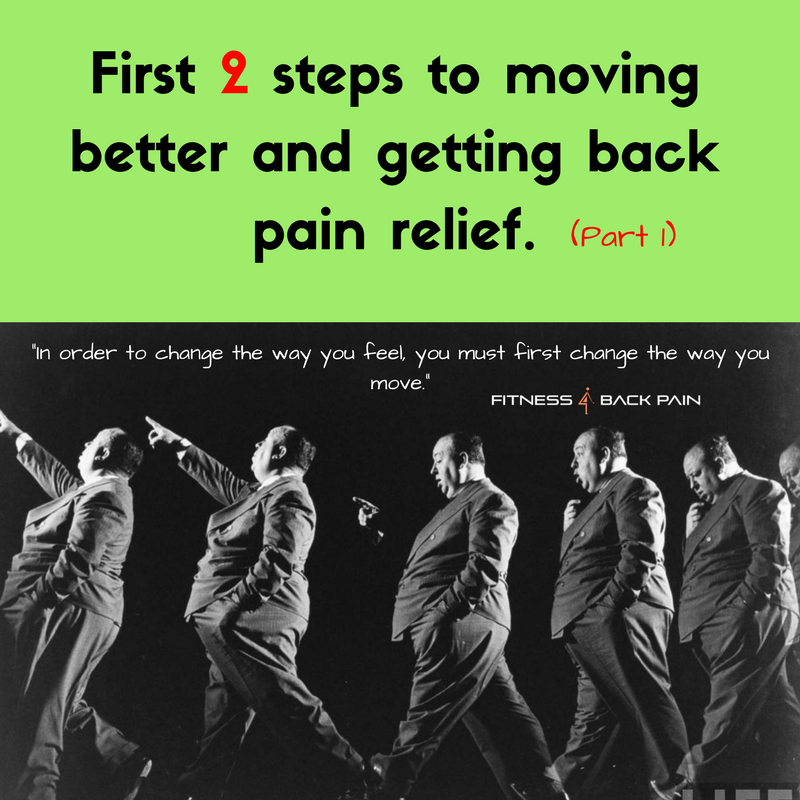
The first thought to come to my mind once my acute back pain started turning into chronic pain was DEFINITELY not about learning to move better. Instead if fixing the way I was moving and using my body, I spent hours on Google and YouTube searching for the answer. I was desperately looking for THE stretch or exercise that was going to not only bring me instant relief but offer a lasting solution to my pain. Odds are, you made that same search and guess what usually hits on the top 10 best answers on Google?
Nothing that actually works.
In today’s post, I want to offer you a different approach to your “first few steps” to working towards rehabbing a bad back. There is no reason to sugar coat this and keep talking about stretching this or foam rolling that. We have to address the way you move and use your body. Whether you have been diagnosed with disc issues, coming from a surgery or have zero damage to your spine but chronic lower back pain, over the next few weeks I want to give you an inside look at how you need to unpack your own personal rehab journey.
Today, we cover two entry level techniques that will lay the first layer to your foundation to getting the relief you want.
I don’t know how else to say this so I’m just going to be straight forward. Lower back pain is not a mind over matter type of thing. The pain is very real, it’s not all in your head and guess what…
YOU are the cause of what’s going on.
Not you throwing your back out at practice when you were in high school or slipping on some ice in your driveway 6 years ago. The way you move is what’s causing your pain. (If you want to see 25 of the most common habits check this out). Your movement is junk and unless you learn to do it right, these dysfunctions are going to eat away at your body. I’m not talking about the complex movements you do in the gym or anything spectacular. I am talking about the way you brush your teeth, how you bend to tie your shoes, how you lift your kids, fold the laundry, wrap Christmas presents, the list goes on and on. It’s the things you do hundreds, sometimes thousands of times a day that has gotten you to where you are today.
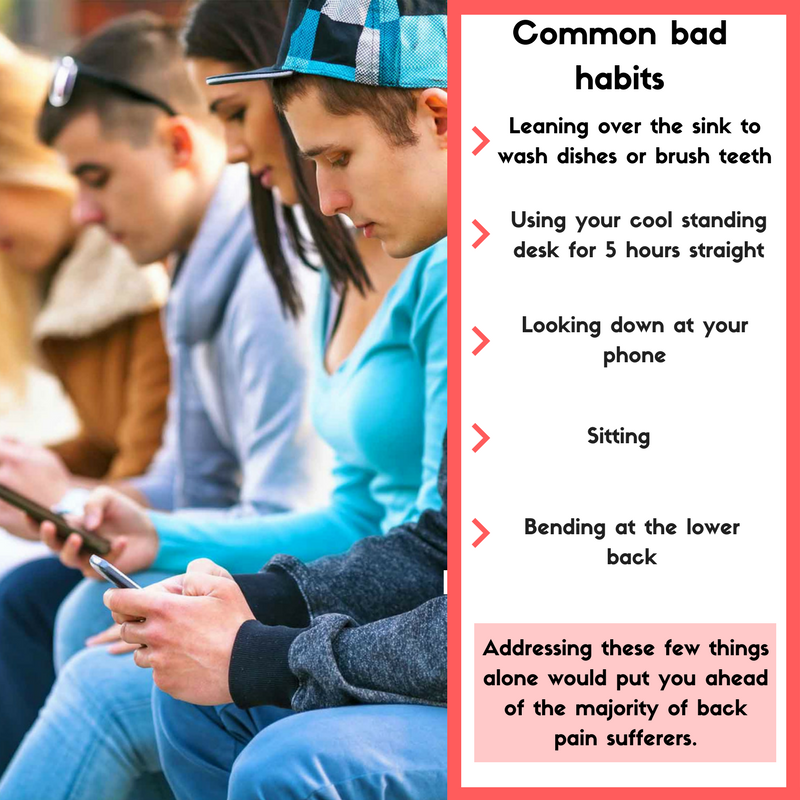
My vision for the next few weeks is to shed light on what actually is important when it comes to creating your own recovery plan and getting the most long lasting relief possible. I’m not talking about stretches or exercises either. We are going to cover ground zero today and work our way up over the next few weeks.
I’m going to break up this content into small bite-size nuggets so you can focus on one thing at a time. If you’re NOT seeing progress with your own strategy I want you to really consider taking a long hard look at the print offs your PT gave you and reevaluate what you’re doing. Each new article will be separated by one week which will give you 7 days to implement what you have learned before the next progression is covered.
** Warning ** If you are going to be following along with this series and implementing what you see here,
A) Make sure you’re cleared by your doctor to even begin any kind of movement outside of daily life
B) You need to stop ALL extra curricular activities and fully commit to following what this series is about. This means no more exercise, no more intermural sports, no more weekend softball league. Everything needs to stop and you need to focus on healing, desensitizing your lower back and learning to move better.
C) Your recovery is on YOUR schedule. Just because I am posting once a week doesn’t mean your body is ready to progress on a week to week basis. If you need more time, take it. If you are able to progress pain-free, do it.
This series is not meant to be your personalized guide. Every back is different but ALL bad backs need to make sure they have these things covered!
Where to begin to move better when dealing with chronic lower back pain.
“Secret tip”: This stuff needs to be hammered every single day. You need to become obsessed with correcting the things we are going to cover today and for the next few weeks. This is not a “when I can remember” kind of thing. There is no other place to start when it comes to getting control over your pain so this stuff needs to be treated as if it was the cure for cancer. If you still believe more rest is what’s best for your chronic lower back pain, it’s time to face the music.
Desensitizing the lower back
-Turn off your back-
Before you can start ANY rehab program you have to learn to cover the basics of being able to lower the demand on the muscles that are causing you so much pain. The first layer of your foundation is learning to shut things off.
This is a very simple topic and it has to do with how we as humans tend to default when it comes to how we move. The problem with a lot of back pain sufferers is they don’t know how to preserve their tissue. Most of the time their lower back muscles are always “on” which over time leads to greater issues. What I mean by “on” is that they are moving in a way that forces their posterior chain to always be working. It’s not your muscles fault, they are just doing their job. The entire posterior chain is there to counterbalance the anterior chain. When one is working the other has to back off or create balance. You create a problem when one side is super weak and the other has to become hyperactive to make up for what’s going on.
Well, when you don’t know how to shut them off and find balance, something is going to eventually get over-worked.
When it comes to the way you stand, there is a simple technique that I personally use and teach my clients to practice every minute they can. The goal of this technique is learning to shut the lower back off and find a sense of balance in your body.
<<Do this now>>
If you weren’t already, you need to start implementing this 1,000+ times a day minimum…okay, that’s a bit unrealistic but I’m trying to get you to completely reprogram the way you move and use your body. In order to do that you have to understand that what you’re doing now is broken. Practice this technique as soon as you set foot out of bed, while you stand waiting for your coffee to finish, while standing to use the bathroom (for the guys), while talking on the phone with your boss that won’t shut up. Whenever you’re sitting or standing, learn to reset yourself and do it every single day until you don’t even think about it.
-Walk with confidence-
Most people have a bad habit of walking with their head to the ground. Because of this, you will typically see the rest of their upper body favor a more forward flexed position when walking. It’s as if their forward movement is being driven by momentum alone. Whether it’s because you’re deep in thought, love looking at your new yzy’s or scared to step on a crack cus you’ll break yo momma’s back. This habit has got to be broken. Stacking your body segments and being able to carry them in a healthy position is huge when it comes to preserving tissue. If your not in a balanced position, these posterior chain muscles become hyperactive. Remember, Chronic pain is a result of chronic poor movement and positions.
Your one solution to actively addressing this issue is this.
Walk with confidence.
You can see the person in the first image has everything hunched over and looking towards the ground. This doesn’t allow for stacking the body segments the way they should and is causing the back line (back of body) to have to work overtime to keep the body upright and moving forward. This is not an efficient way of moving.
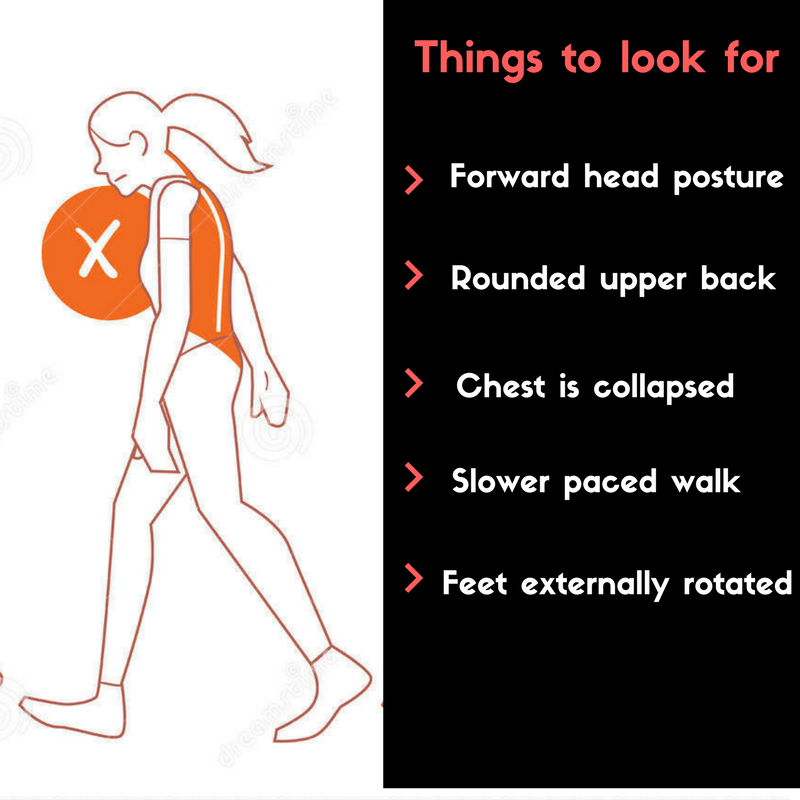
When aiming to correct your posture when walking it simply takes practice and a willingness to make the changes to your daily habits. Over time, just like using the technique to shutting off your lower back muscles, if you actively pursue a better technique with walking, new habits will be formed. All you have to do set reminders for yourself to check your form to ensure you’re on the right track.
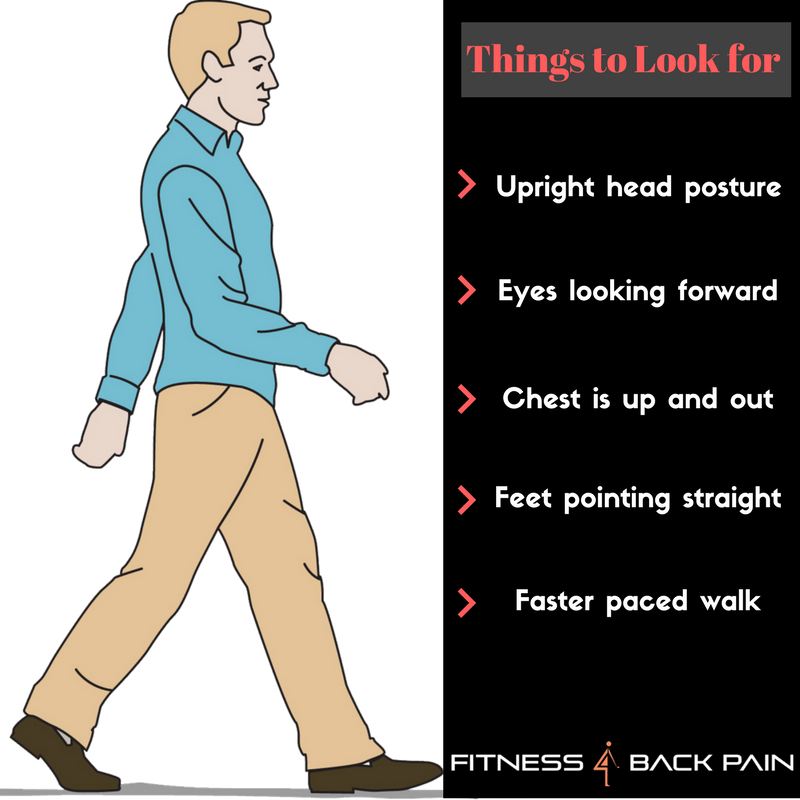
So what does “good walking posture” really consist of?
Well, it starts with your feet. This is actually a great video on looking at the feet when it comes to walking properly. Making a few simple intentional changes can be huge.
Just so we know we are making positive changes to our walking technique lets dive in a little deeper and give you some actionable cues to use when trying to improve your lazy style of walking.
<<Do this now>>
To get a better feel for what your feet are doing when walking I recommend practicing outside in your bare feet. Learn to grip the ground with your toes and use the muscles in the foot and leg to make the movements happen. An easy way of remembering this is to always think to use the muscles in your body while you walk “Intentionally”. If you’re looking to dive even deeper into looking at how to balance the body when walking and making sure you’re activating the right muscles and doing things efficiently, this is an easy read that covers just that.
I wanted this first “ice breaker” post to be easy to implement but super powerful. It’s the simplest way of looking at the first few steps you need to take in seeing long lasting results. If this is old news for you and you are already doing everything we talked about, do an audit of these two things and make sure you are actually doing them right, every single day. If you don’t make these changes permanent, you can’t move on to the next stage of your recovery, it’s as simple as that. Stay tuned for next week as we dive into your next stage of gaining more control of your movement and pain management!!
I need your help! I passionately want to reach people just like you and me who are struggling to find solutions to their back pain and don’t want to go the traditional treatment route. I need your support! If you found this article helpful in any way please share it to your social media platforms or with a specific friend in mind. There is so much crap on the internet that back pain sufferers are consuming and implementing every day. Help me make a positive change! Share the wealth! Thank you!
Addicted to your health,
William
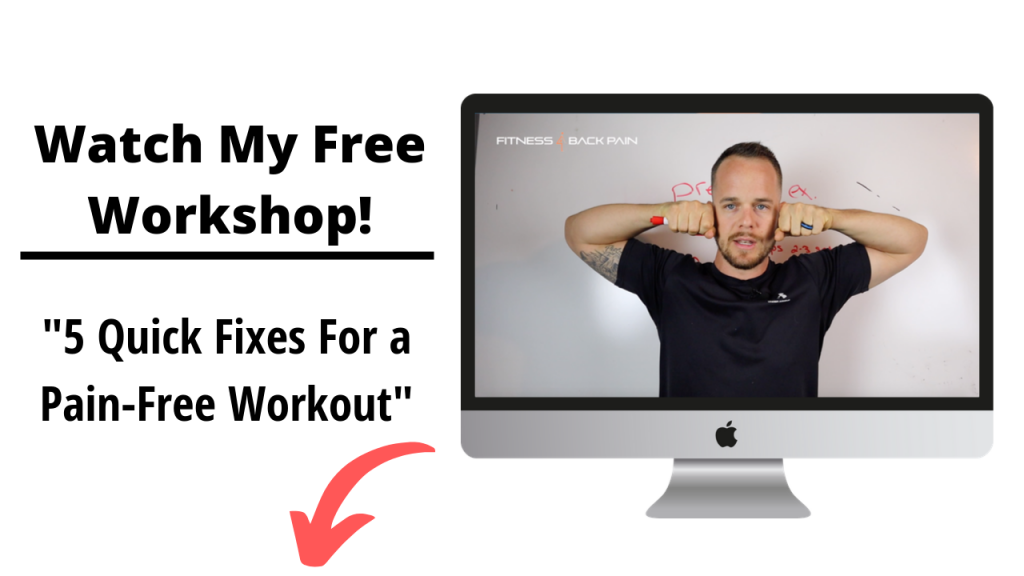

3 thoughts on “First 2 steps to moving better and getting back pain relief (Fundamentals of Movement Part 1)”
Comments are closed.